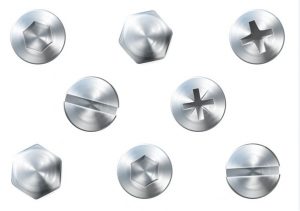
Why do Fasteners Have Different Head Designs?
Ever pondered over the myriad head designs of fasteners? It’s not merely a matter of aesthetics; each design serves a distinct purpose, profoundly impacting functionality. The diversity in head designs reflects the complex needs of various applications, from distributing loads effectively to facilitating tool engagement. But why the variation? Let’s delve deeper into the intriguing world of fastener head designs to uncover the secrets behind their diversity.
How do various head designs impact fastener functionality?
The head of a fastener is not just a mere appendage; it’s a crucial element that dictates its performance. Different head designs offer distinct advantages, from providing increased torque resistance to enabling flush installations. For instance, a hexagonal head offers superior grip and torque transmission, ideal for heavy-duty applications, while a countersunk head sits flush with the surface, ensuring a sleek finish. Understanding the nuances of head designs is paramount in selecting the right fastener for your specific needs.
What are the factors influencing the choice of head design for fasteners?
The selection of a fastener’s head design is influenced by a myriad of factors, ranging from the application’s structural requirements to aesthetic preferences. Factors such as load distribution, accessibility for tooling, and environmental considerations play pivotal roles in determining the most suitable head design. Additionally, industry standards and regulations often dictate specific head designs for certain applications, ensuring compliance and safety. By carefully considering these factors, one can optimize the performance and longevity of their fastening solutions.
